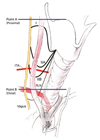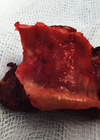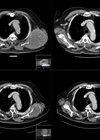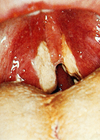ENT features
Intraoperative nerve monitoring: 2017
Having written the definitive text on laryngeal nerves, Gregory Randolph and Dipti Kamani describe the benefits of intraoperative neural monitoring and, importantly, how to proceed if the nerve is pathologically involved or there is loss of signal. Over the years,...
Lessons learned from running a national thyroid surgery registry
The UK Registry of Endocrine and Thyroid Surgery is now yielding the rewards of meticulous data collection and years of hard work. David Scott-Coombes discusses the advantages and the unintended consequences of their success. The British Association of Endocrine and...
Surgical challenges in advanced or recurrent thyroid malignancy
The management of thyroid malignancy and extent of surgery is controversial, especially considering the limitations of preoperative diagnosis. Neil Tolley provides guidance and reminds us of our responsibility not to over-treat. In the UK, 16% of thyroidectomies are performed for...
Systemic agents in thyroid cancer
For those patients who have disseminated or unresectable thyroid cancer, Dr Arabella Hunt and Dr Kate Newbold review systemic treatments, their differences, toxicities and outcomes. Thyroid cancer is the most common endocrine malignancy. It is subdivided into differentiated (papillary, follicular...
Surgeons and swearing
We will all know colleagues who have raised the act of swearing to an art form; just as Malcolm Tucker in The Thick of It could cut a workmate in half with a well-placed swear word, surgeons can be equally...
The role, aims and organisation of the 2017 IFOS World Congress
IFOS is a truly international organisation – indeed, its rules state that the Executive Committee must have representation from every continent. IFOS President, Chong Sun Kim, tells us more. Dear friends and colleagues, I am very pleased to welcome all...
Progress of head and neck surgery in China over the last 20 years
Although China was late to establish head and neck surgery in comparison to other areas of oncological surgery, with the persistent hard work of head and neck surgeons nationally, it has progressed significantly during the last two decades. Yueying Ma...
An update on HPV and the vaccination
In recent years, the role of HPV in the development of oropharyngeal cancers has become apparent. Hannah Fox and Vin Paleri contend that while we may not always be able to cure oropharyngeal cancers, vaccination offers our best hope for...
HPV and ENT; should we vaccinate boys?
David Black and Charlie Hall reiterate Vin Paleri’s pleas for a common sense evidence-based approach by those who allocate healthcare resources to the now urgent issue of HPV-related disease. They discuss the merits of different vaccines and the need for...
Adolescence, drug use and body image
Teenagers are notoriously conscious of how they are perceived by others. Dr Saraiva and colleagues explain how this can lead to problems with substance abuse for both boys and girls, and discuss the different substances they may encounter. Adolescence is...
Tonsillectomy in adolescents
Tonsillectomy is one of the most common operations performed across the developed world. Salil Sood and Ray Clarke discuss the special considerations that apply when performing this procedure on adolescent patients. Tonsillitis in teenagers can be exceptionally painful and disruptive....
Ultramarathons, frostbite and running with wolves
“I could just keep going when most sane people would stop”- the secret to success in head and neck surgery? In August 2015 I crossed the finish line of La Ultra - The High. A small camp of tents and...



















